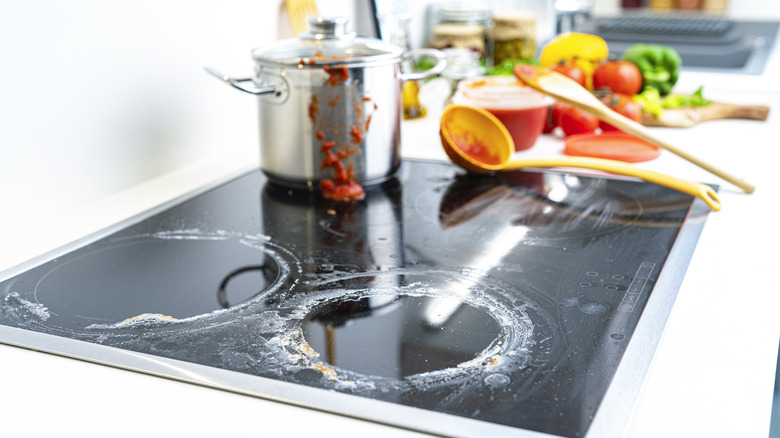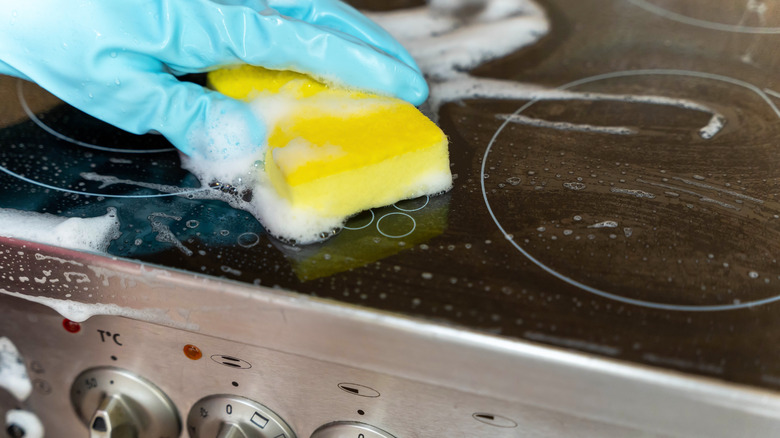How To Remove Melted Plastic From A Glass Stovetop
We may receive a commission on purchases made from links.
Glass, or ceramic, kitchen stovetops are sleek and modern, providing great ambience without taking up a lot of space. Unfortunately, when the unforeseen happens, you can end up with some nasty spills that might seem impossible to clean up. If you've ever used plastic near your glass stovetop, you may have melted some of it onto the surface — creating a huge mess. However, you can easily clean messes on your glass stovetop with certain tools and know-how. For starters, remove melted plastic from your glass stovetop by allowing it to first cool before pulling the hardened pieces up. Then, use a cleaner, and some gentle scrubbing, to finish the job.
It's easy to make mistakes when cleaning your glass stovetop. One of the most common mistakes is not having the right cleaner for it. Ensure that you have a good oil-based cleaner for spills and messes. Harsh chemicals from incorrect cleaners can leave scratches or even a sticky film across your cooktop. Look for a cleaner that is specifically made for glass stovetops, such as HOPE'S Perfect Cooktop Glass and Ceramic Stove Top Cleaner. Another consideration when it comes to plastic melting on your stovetop is that it can pose a potential health hazard. Plastic is often made from flammable substances, so when it melts on your stovetop, you may experience a small fire or even inhale fumes that can be harmful.
How to remove and clean melted plastic from your stovetop safely
Before starting the cleaning process, it's a good idea to ensure you turn off your stove completely, and turn on any ventilation fans in your kitchen area. You may also want to open a door or window to provide an extra exit for fumes. To remove the melted plastic, first ensure that the plastic has cooled completely and that your stovetop is no longer warm. Next, use a blunt metal or wooden utensil with a flat edge to gently scrape off any larger pieces of plastic by pushing it across the surface. Be gentle but apply pressure when doing this — you want to remove as many pieces of plastic as possible, but you don't want to scratch your glass stovetop in the process.
Next, use your oil-based cleaner, or glass stovetop polish, to clean the surface. Allow this to sit for a few minutes, and work into the plastic, before wiping it off. If you don't want to use chemical cleaners, opt for a paste-like mixture of baking soda and white vinegar to soak the remaining plastic pieces. Then, gently scrub any remaining residue away with a sponge. Finally, remove any leftover moisture and cleaner from the stovetop with a dry cloth and buff the surface to achieve a high shine that will leave your glass stovetop sparking clean and looking as good as new.

